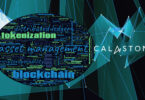Highlights:
- Triterras became a unicorn when it merged with a SPAC in November 2020
- Significant trade volumes were disclosed with related parties
- A related company now has financial difficulties
- A lawsuit claims inadequate related party disclosures
- A short-seller report alleges a drop in volumes denied by the firm
- The short report also alleges odd trading patterns
- It asks whether the SPAC merger was pre-arranged
Less than six weeks after blockchain trade firm Triterras merged with a Nasdaq SPAC to become a unicorn, it faced a lawsuit alleging insufficient disclosure of related party transactions. That was late December. Last week Phase2 Partners which works with clients who hope to profit from a drop in the Triterras stock price, circulated an even more scathing report about the Singapore firm. Some of it was in connection with related party transactions but also other matters. We explore whether there’s any substance to the allegations.
Commodities firm Rhodium Resources introduced almost all of the traders who used the KRATOS (Triterras) trade and trade finance platform in the financial year to February 2020, and 15% of traders in the six months to August 2020. The proportion was expected to decline further. Rhodium is owned by Triterras’ CEO and founder, Srinivas Koneru. Unfortunately, Rhodium is in financial trouble and applied for protection from its creditors. Triterras disclosed this fact in late December in part because Rhodium owes it $1.7 million.
At the time of the SPAC merger in November, only a brief time had passed since Triterras had been entirely dependent on Rhodium. But that was a disclosed risk factor that shareholders should have assessed. One or two of the issues alleged in the Phase2 short report are more concerning.
The class action lawsuit
The result of the announcement about Rhodium’s difficulties was a drop in Triterras’ share price of more than $4 or 31% to $9.09 on December 17, which triggered the lawsuit. However, the stock price recovered to reach a high of $14.72 on December 28, after the lawsuit was filed. And it’s been on a rollercoaster ever since. At the moment the price is $8.10 which means it’s no longer a unicorn.
The stock price hasn’t moved much despite a $50 million share buyback plan announced at the start of the week. That’s in part because Triterras provided a trading update showing a small contraction in trade volumes but significant trade finance growth, and this is a stock price based on hopes of rapid expansion. However, COVID-19 disruption makes matters somewhat murkier.
During presentations at the time of the SPAC merger, the past reliance on Rhodium was made in several statements, and agreements with Rhodium were included in SEC filings. As were risk factors that included, “Our success significantly depends on our credibility and reputation, and to some extent the reputation and credibility of Rhodium, with all of our stakeholders, including suppliers, customers, employees, financiers and insurance underwriters.”
The lawsuit makes a rather weak claim that there were insufficient disclosures about the relationship with Rhodium. What might be a more valid point is the lawsuit’s claim that it didn’t disclose that “Rhodium faced significant financial liabilities that jeopardized its ability to continue as a going concern.”
The Phase2 short-seller report
Some of the Short report claims are similar to the lawsuit, but it included additional details. Phase2 alleges a greater reliance on ‘related parties’ after February 2020 than disclosed. However, it inaccurately classified as related parties two professional directors employed at corporate services firms that provide directors and secretaries to dozens or even hundreds of companies.
This and at least one other inaccuracy opened the door for Triterras to make a credible rebuttal of the report. But further details provided by Phase2 are worthy of attention.
In particular, Phase2 alleges a drop in trade volumes denied by Triterras, implies a high churn rate, and highlights rather odd trade patterns. It also alleges much deeper connections between the Netfin SPAC CEO and the Triterras CEO.
Allegations that volumes dropped
The Triterras Kratos platform uses the public Ethereum blockchain and Phase2 analyzed transactions. These show more than 60 traders have used the platform to date. But according to Phase2’s figures, in November and December 2020 (at the peak of COVID-19), only four traders used the Kratos platform, and they were all new clients since the SPAC merger, implying a high churn rate.
Triterras provided unaudited figures for the quarter ending November, which show only a small drop in revenues relating to trade but a significant increase in trade finance.
The Triterras rebuttal of the report said that the Phase2 data was stale and “the conclusions that the report has drawn are wrong. Simply put, the allegation that our volumes have demonstrated the precipitous drop alleged in the report is untrue. Our business remains on track and we also fully stand by our December 22, 2020 statements that, as of November 30, 2020 there were 66 traders on the platform and that our business remains strong.”
Phase2 didn’t debate the 66 cumulative traders. The issue is the alleged lack of activity in November and December. To address concerns, why not disclose how many clients have actively traded since the start of November?
Apart from commenting that the data used by Phase2 is stale, Triterras stated, “we believe (it) was not obtained solely from public data, but certain data points may have been the result of unauthorized access to the company’s data”. That breach in itself is somewhat concerning.
Odd patterns
Phase2 also alleges strange patterns where numerous transactions are logged on some days, especially around the quarter end, and then none for days. There was no Triterras response to that point. While that may seem a minor detail, it might be a red flag to an auditor. The allegations also raise questions about the real-time nature of the platform.
After all, the purpose of the platform is trade digitization and the same for trade finance. Hypothetically if a company arranged trade finance by phone and email and later logs it on a blockchain platform, should such a company’s stock attract a fast-growing software premium?
There was another strange pattern in Phase2’s figures, which it didn’t highlight. In February 2020, the last month of Triterras’ financial year, one trader appeared to account for more than 40% of transactions. It was a huge spike for that company and only in that month. Separately, Phase2 made a not very convincing allegation that this trading company’s owner had a connection to Richard Maurer, the former CEO of Netfin (the SPAC). That’s because their addresses are a mile away from each other in Georgia, USA.
The Richard Maurer links
The CEO of Netfin, Richard Maurer, disclosed related party transactions at the time of the prospectus. Longview, a firm he’s associated with, accounted for 5.2% of Triterras’ revenue before February 2020 and 9.4% to August 2020. The fact that related parties Rhodium and Longview together accounted for 25% of revenues at the time of the SPAC merger may very well be a cause for concern. But they disclosed it.
The prospectus also gave details about the relationship between Maurer and Triterras CEO Koneru. “Mr. Koneru was known to Mr. Maurer because of previous business affiliations, including as a 10% minority shareholder of Exxova, Inc., an IT-services business founded by Mr. Koneru in 2005, which was subsequently sold in 2010,” says the prospectus.
The Phase 2 report includes a legal letter to Exxova dated 2012 (after its sale), which refers to Maurer as the co-founder and chairman of Exxova.
Furthermore, the report alleges that the two men were officers together at three other firms (we have not verified this), one of which was dissolved just before the SPAC merger. That said, the prospectus didn’t claim Exxova was the only affiliation. It used the word ‘including’. If the Phase2 data is accurate, the question is whether there should have been more comprehensive disclosures.
Phase2 did not directly allege that the SPAC merger was pre-arranged but sailed close to the wind. It says, “one must question if this was a ‘pre-planned’ transaction” and states, “SPAC rules strictly prohibit pre-arranged targets.”
Update: Since this article, KPMG resigned as Triterras’ auditors







